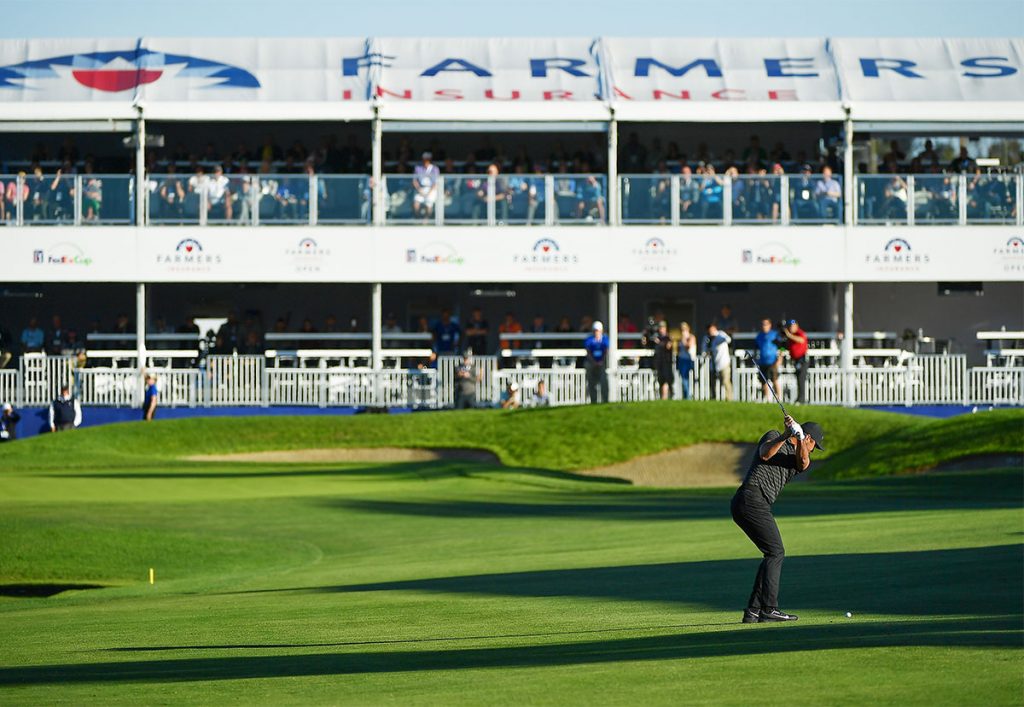People ask me all the time what frustrates me on the course, and the answer is simple: I don’t like playing poor golf.
So much needs to happen to win a golf tournament, but if you’re playing poorly you’ll never have a chance.
As a former world No.1, I know the level I can play at. My goal is, and always has been, to get to No.1. If I’m not there, I’m shooting to get back. When I get that chance, I don’t just want to get back to No.1 – I want to dominate.
I don’t think you can do that without having your distances dialled in. That’s often the difference between winning and losing – it’s such a fine line when you’re up against the best players in the world. It can come down to one shot, or one yardage.
A good example is my wedge shot into the sixth playoff hole when I won the Farmers Insurance Open at Torrey Pines early last year. With Alex Noren finding the water hazard while going for the green in two, I had an 85-yard wedge shot [below] for my third that I knew could set up a birdie and win the tournament.

Somehow, I knew coming out (in the Monday morning finish) that I had to be on top of that wedge distance. So I worked on that number in my warm-up on the range and it paid off. I hit that lob wedge on the 18th to 18 inches and sank the putt.
How to Dial-In Yardages
Day’s coach, Colin Swatton, says knowing your numbers is all about preparation. Here he shares how his star pupil gets dialled in to make missing greens a rarity …
Jason, and every other player on tour, doesn’t just imagine the number each club goes. They dial in and memorise the numbers during countless hours of practice, often with the assistance of Trackman technology.
For the wedge shot Jason is talking about here, we spent considerable time in the Californian desert in the lead-up to Torrey Pines, simulating the coastal conditions of Torrey. We talked about playing at sea level and in conditions were temperatures might be 10 or 15 degrees (Celsius) comparative to what we were experiencing in the desert, where the temperature was closer to 25 degrees.
Jason is the best chipper and putter on the planet, and his short game ensures he’s always in with a chance. But he and I continue to work on improving his iron play (in the 2018 season, Day ranked 129th on the US PGA Tour for strokes gained: approach the green).
I’ve said before that I don’t think that has a whole lot to do with the swing; I feel it is more of a commitment issue on each shot. If we work hard on dialling in his numbers, I think you will see Jason’s iron play get back to the ball-striking brilliance he can achieve.
For club golfers, though, it is imperative to take the ego out of your game and determine and accept your actual numbers. You may like to think your 8-iron goes 150 metres, but with testing it only flies 135 metres when conditions are flat and perfect.
Taking a lesson with a PGA professional should give you your true distances, so you can start to use the correct club for each shot. You’ll swing smoother and find your misses are just off the green, where saving par is a much easier task.
– with Evin Priest




